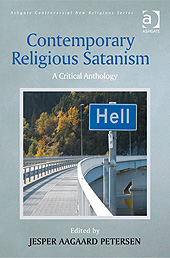 Cover | |
| Editor | Jesper Aagaard Petersen |
|---|---|
| Language | English |
| Series | Controversial New Religions |
| Subjects | Religious studies Satanism studies |
| Publisher | Ashgate |
Publication date | 2009 |
| Publication place | United States |
| Media type | Print (Hardcover) |
| Pages | 277 |
| ISBN | 978-0-7546-5286-1 |
| OCLC | 226978969 |
| LC Class | BL480 .P39 2009 |
Contemporary Religious Satanism: A Critical Anthology is an academic anthology published by Ashgate in 2009 and edited by the Norwegian religious scholar Jesper Aagaard Petersen, then a lecturer at the Norwegian University of Science and Technology.
Contents
The book is divided into three sections, containing eight separate papers produced by various scholars working in the field of Satanism studies; Contemporary Religious Satanism examines different forms of Satanism as practiced in Europe and North America. It was a part of Ashgate's series of books on "Controversial New Religions" alongside tomes devoted to the academic study of new religious movements, such as Wicca and the Order of the Solar Temple.
Academic reviews were mixed, being printed in peer-reviewed academic journals such as Nova Religio , Aries , and Magic, Ritual, and Witchcraft . It was recognised as a pioneering publication in the field of Satanism studies.